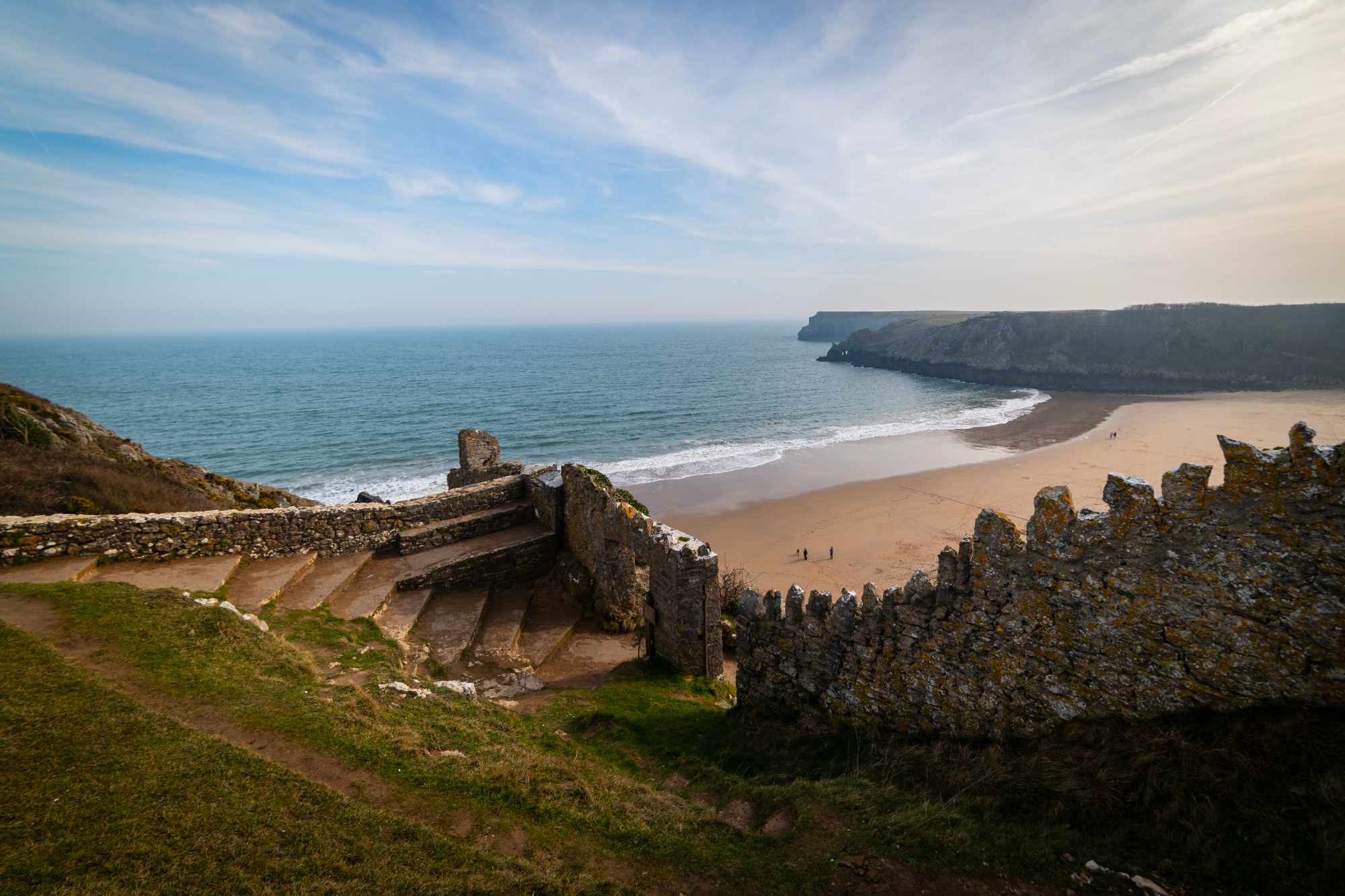For almost all of human existence, mountain environments have been seen as places to avoid. They were climbed only to drove livestock for trade, or to meet with people from the next village. And even then, the end-goal for those on foot was always the passes, the lowest points where mountains meet. Mountains were foreboding and frightening; they harboured monsters and giants. They were places of danger.
But at some point in the last 300 years, mountains started to evoke the sublime rather than blind terror. The way in which mountain environments were written about began to change — and the manner in which artists portrayed them altered, too. In the 18th century, the concepts of the picturesque and, particularly, the sublime (that is, awe-inspiring, beautiful and untameable) started to dominate both the perception and depiction of our mountain landscapes. On a visit to the Lake District in 1767, Dr John Brown wrote: “The full perfection of Keswick consists of three circumstances, Beauty, Horror and Immensity united.”
If you’ve ever walked up a Lake District fell or Eryri (Snowdonia) mountain in the mist and then seen the clouds part to briefly reveal the vastness of the mountains, you’ll recognise the feeling of awe, the wave of emotion. It’s a large part of why we head up among the peaks, and a big reason why the mountains became a muse to the artist and to the writer.
By the late 1700s, the Lake District, like the Alps, was an essential stop for any self-respecting painter, poet, writer or thinker on tour. These travelling creatives liked their mountains immense, edgy and more than a little scary. Wordsworth’s daffodils and lonely-as-a-cloud wanderings were still a few decades away. Thomas Smith of Derby’s depictions of the Lake District showed mountains that appeared impossibly steep and impenetrable. Thomas Gainsborough’s scenes of the region when he visited in 1783 were a little more faithful and bucolic but loaded with melancholy — rain was always on the way.
By the 19th century, artists and poets visiting the British mountains were more keen on the immersion of dawdling and wandering. For the first time, walks in the mountains were seen as restorative and healing for both body and mind. This was partly a response to accelerating industrialisation. JMW Turner and John Constable depicted the mountains in a Romantic way, and even at the time were criticised for being out of touch with the harsh realities of Britain in the early 1800s, but a shift was taking place. People had started to visit mountains — on purpose. They climbed them for pleasure. Tourists came (tourists!).
That the mountains became a source of inspiration for so many artists is perhaps no surprise, yet the depth and variety of their different moods and painting styles, particularly up to the present day, is staggering. From the otherworldly, awe-inspiring scenes of the early sublime painters to the Romantic period of sun and rainbows, and today through photography, abstract art and sculpture… it goes on.
Admiring these works is best done in situ, where you can feel the same landscapes under your feet and the same winds breezing through the trees. Overleaf, we’ll look at where to visit some of the spots that have inspired artists over the centuries.
Lake District

JMW Turner, John Constable, Thomas Gainsborough, John Robert Cozens, W. G. Collingwood, Thomas Girtin and John Ruskin all painted the Lake District. Some of these were romantic, others showed the sublime, some the idyllic, others the terrible. All were deeply impressed by the sheer scale and grandeur of the Lake District.
Thomas Smith of Derby’s A View of Derwentwater from Crow-Park shows a not-entirely truthful aspect, although the mountains appear impossibly high and foreboding, a view which can still be seen from Crow Park by the Theatre By The Lake in Keswick.
JMW Turner’s Buttermere Lake, with Part of Cromackwater, Cumberland, a Shower firmly depicts the sublime (although he couldn’t resist a rainbow). From YHA Buttermere, walk around the south side of the lake to Peggy’s Bridge for a broadly similar view.
Places to stay in the Lake District.
Eryri (Snowdonia)

The mountains of North Wales inspired numerous painters of the 18th and 19th centuries. Moses Griffith drew Eryri (Snowdonia) from Capel Curig for the pages of A Tour in Wales, a book by Thomas Pennant, published in 1781. Philippe Jacques de Loutherbourg followed in Griffith’s footsteps with his painting Snowdon from Capel Curig, a morning. The V&A holds dozens of works by regular Wales visitor John Varley, who painted Yr Wyddfa (Snowdon) in the early 1800s.
JMW Turner toured Wales several times, inspired by his friend, the Welsh artist Richard Wilson. Turner painted Glyder Fawr and Glyder Fach in his 1798 work, A Lake among Mountains, which is still held at the Tate.
Eryri (Snowdonia) continues to be a great inspiration to artists today, notably Alison Bradley and Rob Piercy, who evoke the timeless nature of the mountains.
Places to stay in Eryri (Snowdonia).
Yorkshire Wolds

The Yorkshire Wolds are singularly associated with one artist: David Hockney, one of Britain’s most important living painters. Ironically, he’s perhaps best known for his sun-drenched Californian works such as A Bigger Splash, although it’s here in the clefts and folds of his home county that his expression perhaps finds its truest form. His The Road Across the Wolds series was inspired by the road between Cowlam and Sledmere, while Garrowby Hill — the subject of another of his paintings — is just 14 miles from York. The super-sized canvas of Bigger Trees Near Warter, meanwhile, sees Hockney at his brilliant best, capturing something of the Wolds’ towering seasonal beauty.
YHA Beverley Friary is the best place to embark on a tour of Hockney vistas, but to see one of the largest collections of his work, go to the Salts Mill & 1853 Gallery in Saltaire, Yorkshire.
Places to stay in Yorkshire.
Peak District

The Peak District may be more gentle in drama than the Lake District, but its moody light, dappled dales and craggy contours has inspired vast numbers of artists nevertheless. The undeniably romantic beauty of Dovedale has always provided something of a focal point, and was elegantly captured by 18th-century landscape artist Joseph Wright of Derby in Dovedale by Moonlight — one of five canvases he made of the valley.
The Peak District’s ever-changing landscapes continue to inspire painters today, to the point where there are art galleries in almost every town of the region. Chatsworth House has a superb art collection of its own, of course, curating the best artists in the area and selling their work. Two recommendations for contemporary Peak District painters? Check out Sue Nichol (suenicholartist.com) and Roger Allen (rogerallen.co.uk).
Places to stay in the Peak District.
Photo credit: Tranquillian / miketea88 / David Matthew Lyons / Richard Pinder / Alex / Tim Hill / Andy / Adobe stock
Discover more about YHA.
Read next: Interesting red squirrel facts













